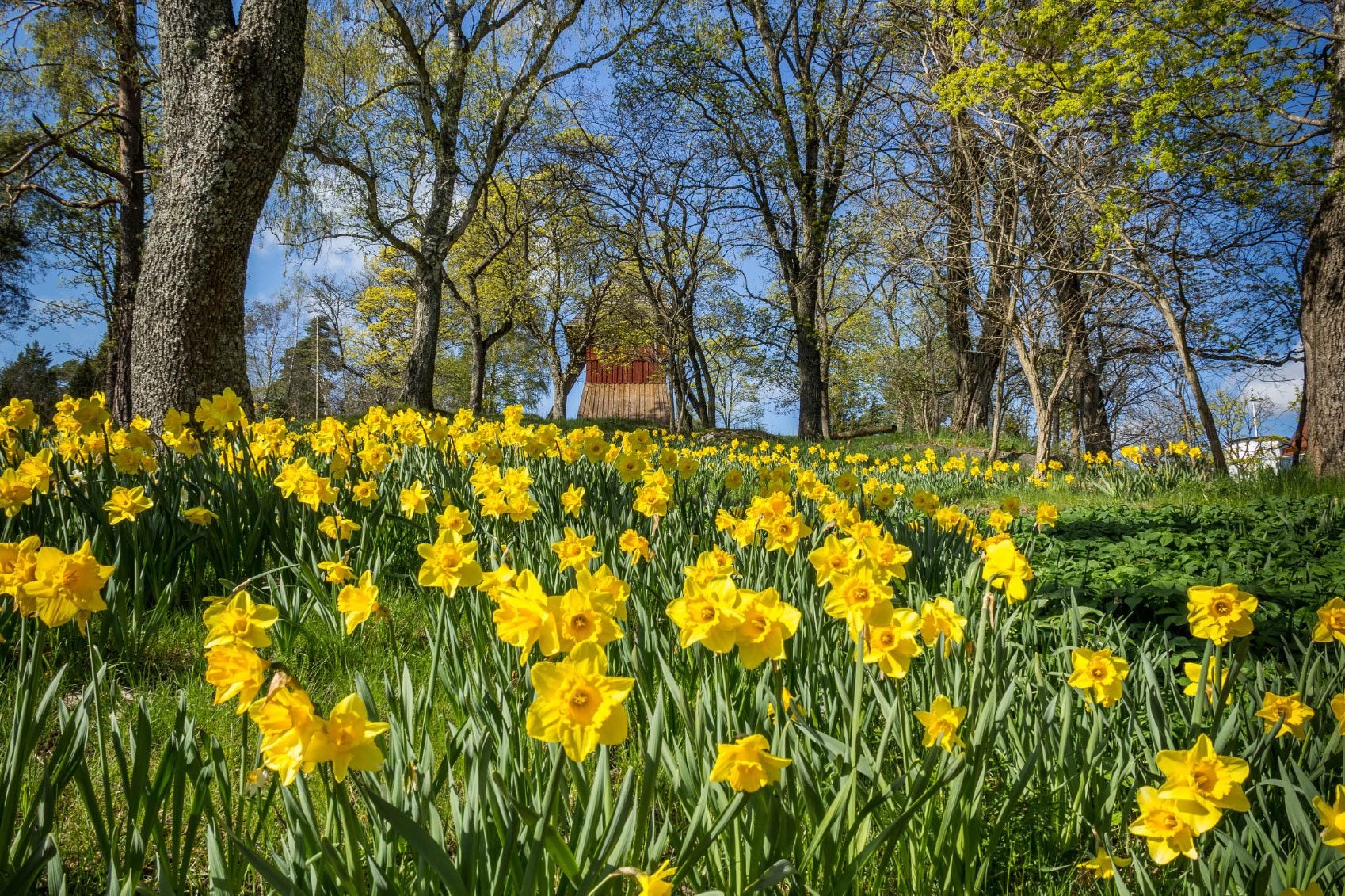Naturalizing Daffodils In Gardens: Naturalized Planting Of Daffodils


Aging plots of daffodils will expand and multiply as time goes by. This is a process called naturalization. Daffodil naturalizing occurs without intervention and produces numerous bulbets which may be divided off the parent plant or left in ground to produce a new plant. Pick a good sized bed when naturalizing daffodils and over time you will have a sea of golden trumpet shaped blooms.
How to Naturalize Daffodil Bulbs
The proper soil is key to naturalizing daffodils. The bulbs do not perform well in heavy clay soils or in beds without excellent drainage. Amend the bed with leaf litter, compost, perlite or even a bit of sand to achieve good porosity and drainage. If the soil is just too soggy, build a raised bed for daffodil naturalizing. The soil should hold just enough moisture to keep the roots lightly moist but prevent a constant boggy mess around the bulbs which can cause rot. Naturalized planting of daffodils creates a wild woodsy sea of yellow blooms and guarantees a steady supply of flowers annually.
Planting for Daffodil Naturalizing
Once garden soil is the proper texture, the depth and spacing of the bulbs is important for the best effect. Daffodils look best in clumps rather than rows. Install the bulbs 6 inches (15 cm.) down in prepared holes. Space them three times the width of the bulb in groups of at least five. There is some discrepancy among gardeners as to whether you should put fertilizer in the hole. Most seem to agree that fertilizing the bed itself while amending is the best method. Mix in superphosphate prior to planting the flower bulbs. At the first sign of green, feed with a balanced liquid or granular fertilizer. Keep the bulbs lightly moist just after installation when they are forming roots. Cover with a light mulch over winter to protect the new roots and keep the bulbs from freezing and splitting.
Naturalized Planting of Daffodils with Other Bulbs
The blooms on daffodils die back long before the foliage. Foliage should remain until it is spent to help give energy to the bulb, which it stores for the next year's production of flowers. The leaves can look ragged and ugly in the garden, but this is easy to cover up with other bloomers. Plant annual flowers, vegetables or shallow rooted perennials in the same bed to hide the old foliage as it does its good work. Some gardeners bundle the leaves with rubber bands to keep them from looking unattractive. This prevents the leaves from getting maximum sunshine and collecting solar energy.
Splitting Bulbets
The smaller bulbs that form off the parent structure can be divided away from the main bulb. They often form smaller, less vigorous plants, however. If you wish to transplant some of the daffodil plants to another bed after they have naturalized, dig up the parent plant and pull out the entire cluster. Do this in fall after the foliage is completely spent and plant in a prepared bed or pot to start a new crop of the cheery flowers. When you know how to naturalize daffodils, you will have a steady supply of the bulbs to share and spread in your garden.
Gardening tips, videos, info and more delivered right to your inbox!
Sign up for the Gardening Know How newsletter today and receive a free copy of our e-book "How to Grow Delicious Tomatoes".

Bonnie Grant is a professional landscaper with a Certification in Urban Gardening. She has been gardening and writing for 15 years. A former professional chef, she has a passion for edible landscaping.
-
 Looking For Plants To Give You The Soft And Fuzzies? Try These 5 Fuzzy Leaf Plant Options
Looking For Plants To Give You The Soft And Fuzzies? Try These 5 Fuzzy Leaf Plant OptionsLovers of texture, drama, silver foliage and tactile plants will adore these special sensory garden additions. These fuzzy leaf plant options will leave you all aglow
By Susan Albert
-
 Get Ready For A Summer Of Hummers! Grow These Full Sun Hummingbird Plants and Flowers
Get Ready For A Summer Of Hummers! Grow These Full Sun Hummingbird Plants and FlowersIf you’re lucky enough to enjoy a sunny backyard, make sure you are maxing out on your pollinator opportunities and grow these full sun hummingbird plants and flowers
By Tonya Barnett